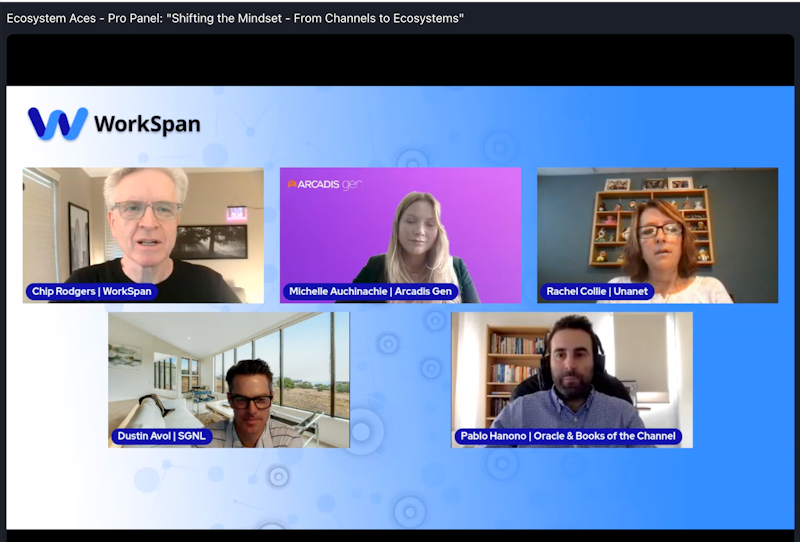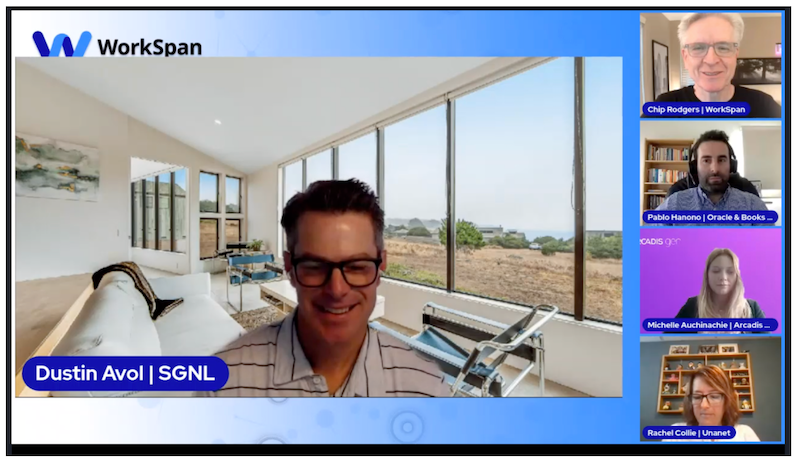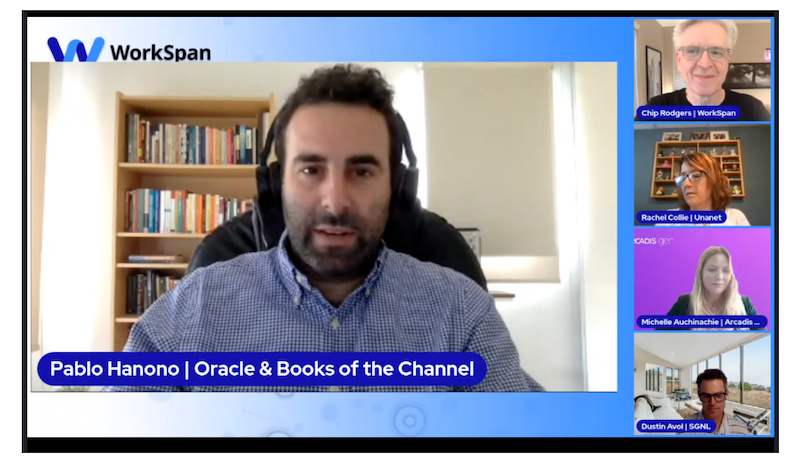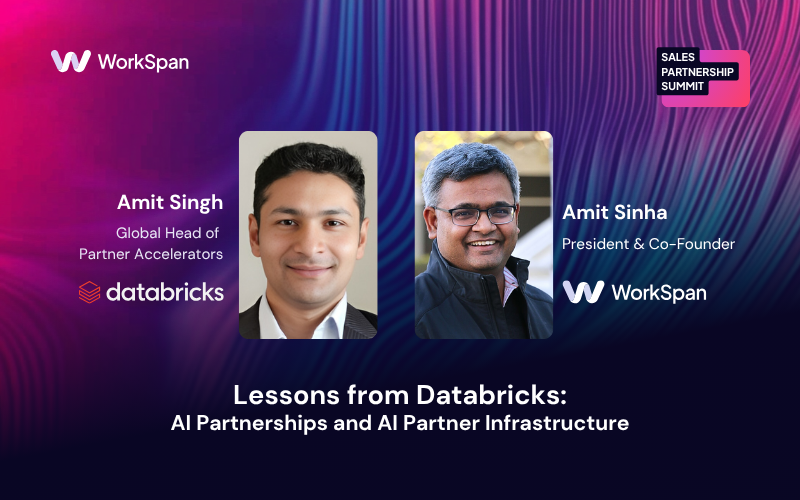
Recently Jay McBain said that "We are in the early innings of the Decade of Ecosystems, and IDC declared that companies that adopt an ecosystem business model will grow 50% faster than companies that do not".
The World of Partner Ecosystems is heating up with numerous businesses and leaders moving towards an Ecosystem mindset.
On July 21st, WorkSpan hosted a brand new series of conversations: Ecosystem Aces Pro Panel hosted by Chip Rodgers, CMO WorkSpan. This blog shares some of the discussion and highlights from that engaging session - read on!

The session included partnership pros representing a wide range of technology companies and geographies:
- Dustin Avol, Director Of Market Strategy and Partnerships, SGNL, based in San Diego, California
- Pablo Hanono, Senior Manager, Global Partner Program, Oracle, based in Greater Buenos Aires, Argentina
- Michelle Auchinachie, Ecosystems Director, Arcadis gen, based in Glanton, England, United Kingdom
- Rachel Collie, Director, Technology Partnerships and App MarketplaceDirector, Unanet, based in Denver Metropolitan Area, Colorado
Panelists shared their thoughts and ideas regarding the shift to ecosystems and how their businesses are benefiting from it.
The Decade of Ecosystems
First of all, Chip talks about the Decade of Ecosystems and the transition from the channel to ecosystems. He asks the experts about how they see this transition and manifest it within their business.
Rachel said Unanet is still new to the game of ecosystems, especially on the tech partner side, and is building out the foundation. They are building the processes and workflows to support a scalable partner program as they have the time to do that. She believes technology partnerships are needed to expand deals and not just to win deals.

Rachel has been able to help product teams refocus their development efforts as a partner can help them go to market faster by solving a functionality need versus building something internally. Dustin Avol has experienced that moving from channels to an ecosystem mindset means value creation, where companies can offer a rich experience to customers instead of just closing down a deal.
Michelle talks about the challenges of shifting to the ecosystem in a more traditional company. To do this at Arcadis Gen, they look at their customers, other organizations interacting with their customers, and then decide whether to partner with these organizations. They look at the entire customer journey and see where it is possible to work with partners at the right stages.
Measuring Partner Program Success
Different companies measure success in a different way, so their KPIs may vary. Rachel reports to the product team, and their view of integration partners is about adoption. They look at two things – the percentage of customers who have an integration to something and how to get all customers to have an integration with something. She says the more integrations are in place, the more integrated the tech stack is, which creates more sticky customers and stable renewals.

Dustin says that whatever KPI is measured, it should be in the direction of positive performance. Anything which is important to an organization at a given time should be made into a metric. The thing which is most relevant, the organization and its partners, are going to shift their focus towards that.
Benefits of a Diverse Partner Ecosystem
There are lots of benefits of a diverse partner ecosystem, with executive sponsors and alliance partners playing a vital role in an ecosystem’s success. It's not about a particular team within an ecosystem, and everyone, including the C-suite executives, need to buy-in the ecosystem strategy.
Michelle tells that Arcadis Gen is working with Microsoft and AWS to co-innovate solutions built on their platforms. Arcadis has taken advantage of this partnership as they have executive sponsors in partner organizations. These sponsors help the co-innovation programs and tap into the resources, insights, and expertise both for the technical and go-to-market spheres.

With a diverse ecosystem, companies can understand each other’s financial objectives, pain points, and where a particular partner can fit into the overall business strategy. Without executive buy-in from all partners, the ecosystem cannot succeed.
Changed Roles for Partner Managers
Traditional channel managers used to focus more on sales and just interacted with partners regarding their pipeline and what could be done to close deals faster. Today, the role has changed a lot where partner success managers focus on partner development and training. Managers call partners to talk about the pipeline and maximizing revenue, but a lot of effort is put into long-term partner training certifications as well.
For smaller organizations, managers need to work on partner development, but they also need to recognize business opportunities and fulfill deals. The partner manager role used to be all-encompassing, but it has become a lot more specialized now based on the type of partnership, what’s needed, and the customers’ requirements.
Shifting the Mindset Towards Ecosystem Partnering
Companies have changed their mindset, and they don’t just work with partners because they will deliver more revenue, companies find partners with integrations that can help their product roadmap. They understand that they need someone with deep industry knowledge and expertise to handle IBM, Microsoft, or other system integrators' partner accounts.
There are some challenges that companies face when shifting to a partner ecosystem. Earlier, teams were focused more on KPIs like how many deals are made and other tactically structured KPIs, but now partner management is all about the trust and relationship with partners. It is understanding each others’ products and how to go-to-market together, and many sales team members struggle to adapt to the partner ecosystem.

Most successful partner managers are the people who have a background in customer success and business development roles. It is an ever-evolving role, and one cannot provide a fixed job description for a partner manager. Another issue companies face is how to compensate partners during customers’ cloud adoption life cycle.
In the ecosystem, there will be a company generating leads, doing pre-sales work, testing, demos, etc. Someone closes the deal, takes the payment, deploys the solution, and then renews or expands it. Thus, there are almost five phases in a customer life cycle, and every partner has to be compensated for their share of the work.
All these five aspects are crucial for customer success, and a company should know which partners play roles in each phase. The partners are responsible for bringing in leads, closing the deals, and renewals, so they must be compensated accordingly for making customers stick long-term.
Key Takeaways on How to Build a Successful Partner Ecosystem
First of all, the ecosystem should have the right system in place and focus on measuring metrics that matter. When you look for executive buy-in on working with partners, make sure to ask for investments for the right systems and other resources. Partners want the best, and if an ecosystem wants to launch something next-gen, then there must be the systems to support it.
Partner managers and partner leaders should have the willingness and authority to make decisions. The role of partner managers is evolving, and they must create and develop their path, feel confident in their value, and be empowered to make the right decisions for the ecosystem.
Alignment is key in executive roles, and the ecosystem should manage the metrics they measure. Also, customers are the most important for an ecosystem, and all solutions must be built keeping customer needs in mind. Leaders need to take an innovative approach because customers don’t know what they want exactly. It is important to listen to the customers and offer them something valuable and next-gen.
Companies may think a solution or product is valuable based on years of experience, but if the product does not fit customer validation or does not match with the customers’ requirements, then it won't be of much use. Also, there should be trust, transparency, and openness among partner leaders to achieve success. This is important because each company has different goals, and trust is needed to make things work.
Wrapping Up
The Pro Panel discussion went in-depth into the shift from channels to ecosystems. All four partner leaders in the discussion shared their ideas regarding the shift and how their organizations are going about it.
They discussed the many benefits of shifting to an ecosystem, how they are taking advantage of this, and the many challenges they faced while making the shift to partner ecosystems. Organizations can get a lot of understanding and insights needed to succeed in today’s competitive landscape.
Partner Ecosystems are not the future, they are happening today, and tech businesses are rapidly shifting to this model. Let’s continue the conversation!
If you have questions for our panelists or moderator, post your questions on the WorkSpan Community, and our Pro Panelists will answer them.

Heading
Heading 1
Heading 2
Heading 3
Heading 4
Heading 5
Heading 6
Lorem ipsum dolor sit amet, consectetur adipiscing elit, sed do eiusmod tempor incididunt ut labore et dolore magna aliqua. Ut enim ad minim veniam, quis nostrud exercitation ullamco laboris nisi ut aliquip ex ea commodo consequat. Duis aute irure dolor in reprehenderit in voluptate velit esse cillum dolore eu fugiat nulla pariatur.
Block quote
Ordered list
- Item 1
- Item 2
- Item 3
Unordered list
- Item A
- Item B
- Item C
Bold text
Emphasis
Superscript
Subscript





.png)